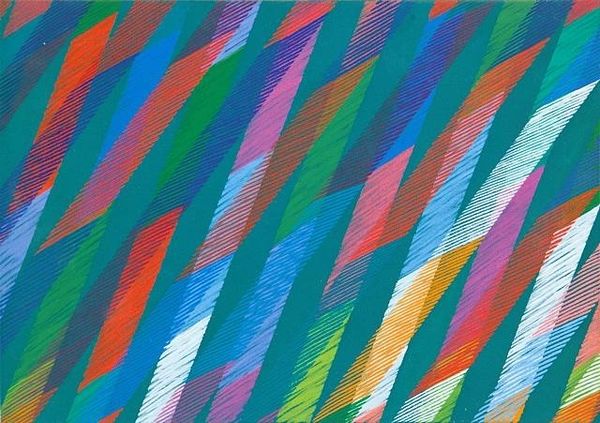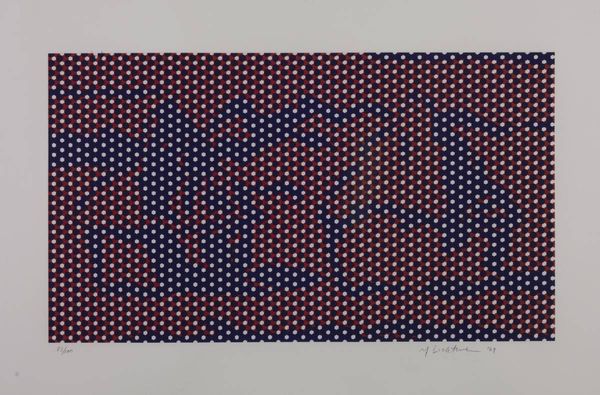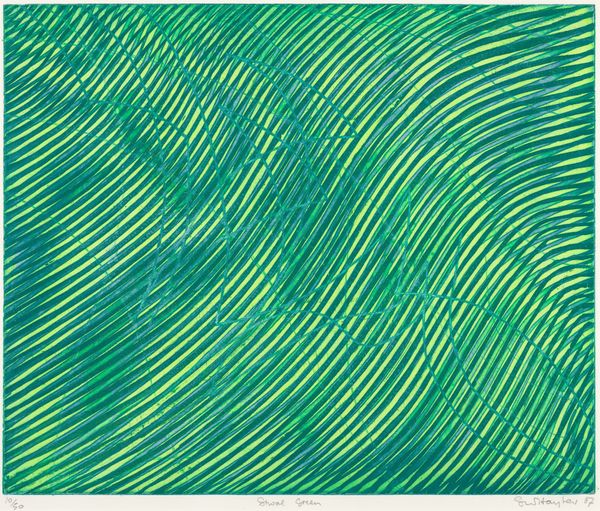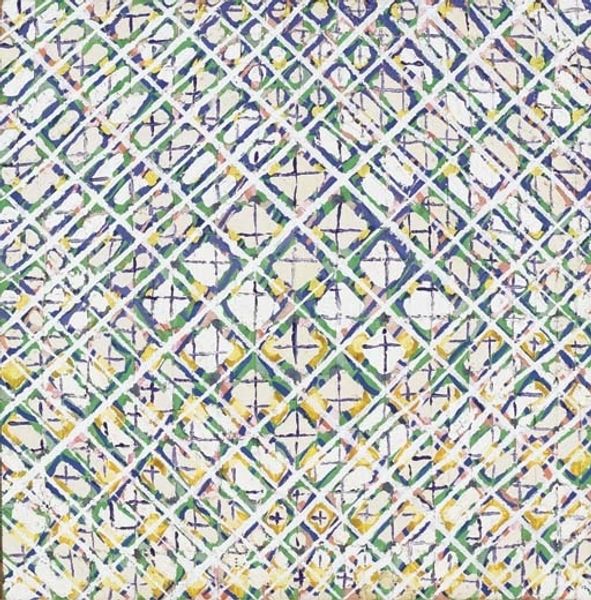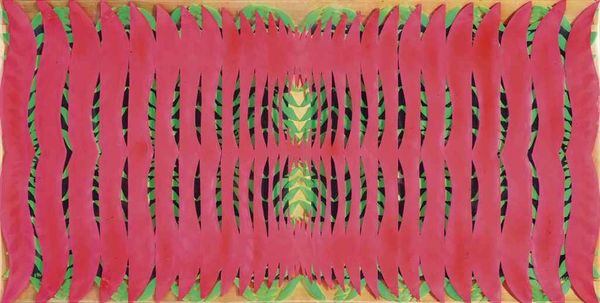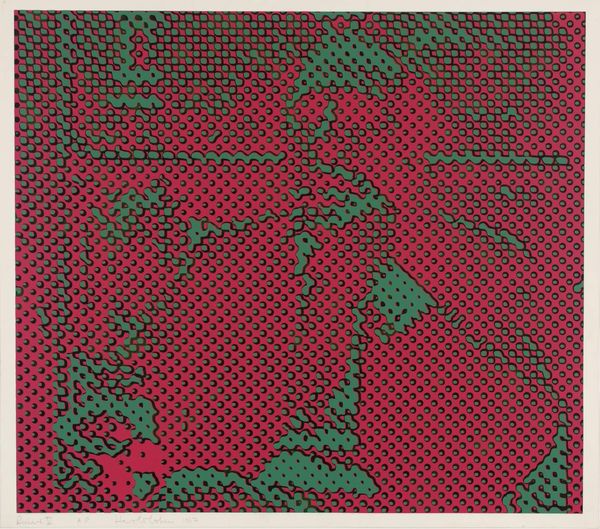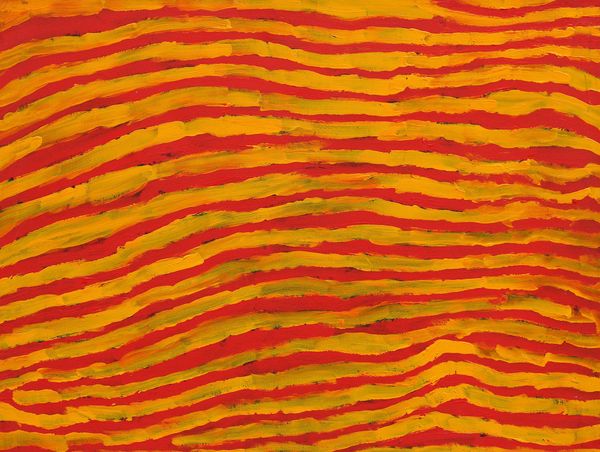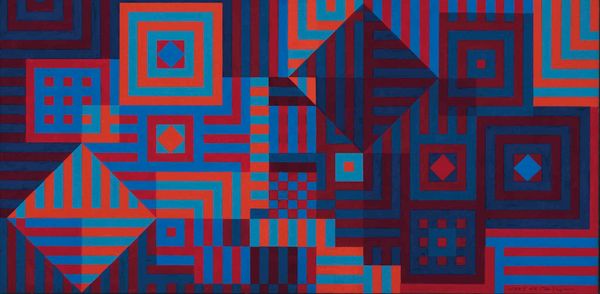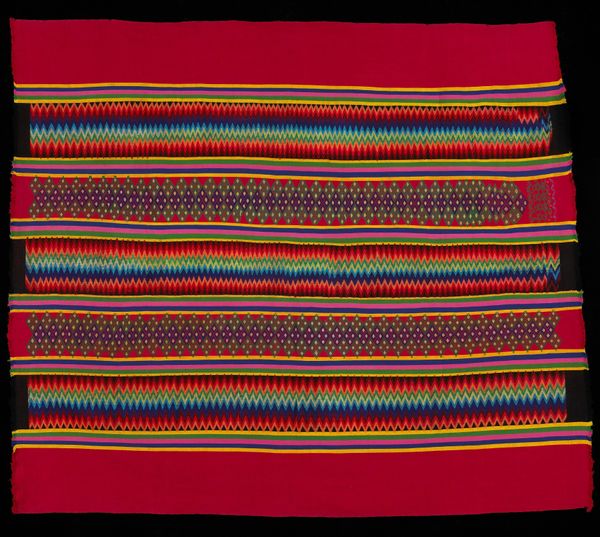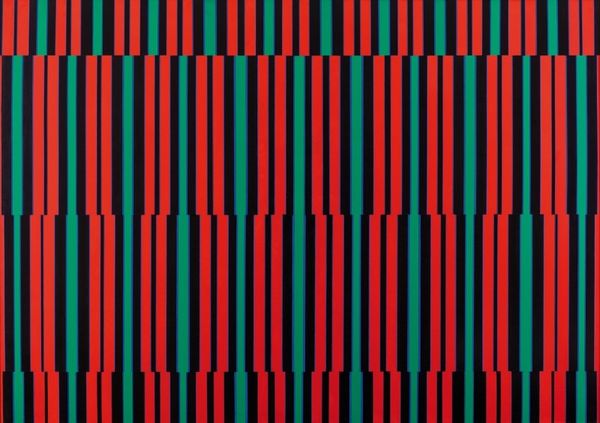
Weaving Sample 1932 - 1937
Dimensions: Dimensions vary
Copyright: CC0 1.0
Curator: Here we have Otti Berger’s “Weaving Sample” from the Harvard Art Museums, a textile piece with dimensions that vary. Editor: It’s a vibrant, almost dizzying pattern of alternating red and blue. The diagonal lines give it a sense of movement, a visual rhythm. Curator: Woven textiles, like this sample, often carry coded visual languages specific to communities, signaling social status, origin, or belief systems. Editor: Absolutely, and it’s vital to consider the socio-political contexts. Textiles provided economic independence for women, yet the labor remains systematically undervalued. Curator: Indeed. Berger, like many Bauhaus women, faced professional marginalization despite her innovative weaving techniques and material experimentation. These symbols were largely overlooked. Editor: It serves as a powerful reminder that art is never created in a vacuum, and re-evaluating such pieces brings marginalized narratives into the spotlight. Curator: Seeing the symbols within weaving makes me reflect on how the ordinary and functional can hold unexpected layers of meaning. Editor: And for me, it underscores the importance of intersectional analyses in art history, revealing untold stories of gender, labor, and cultural memory.
Comments
No comments
Be the first to comment and join the conversation on the ultimate creative platform.
